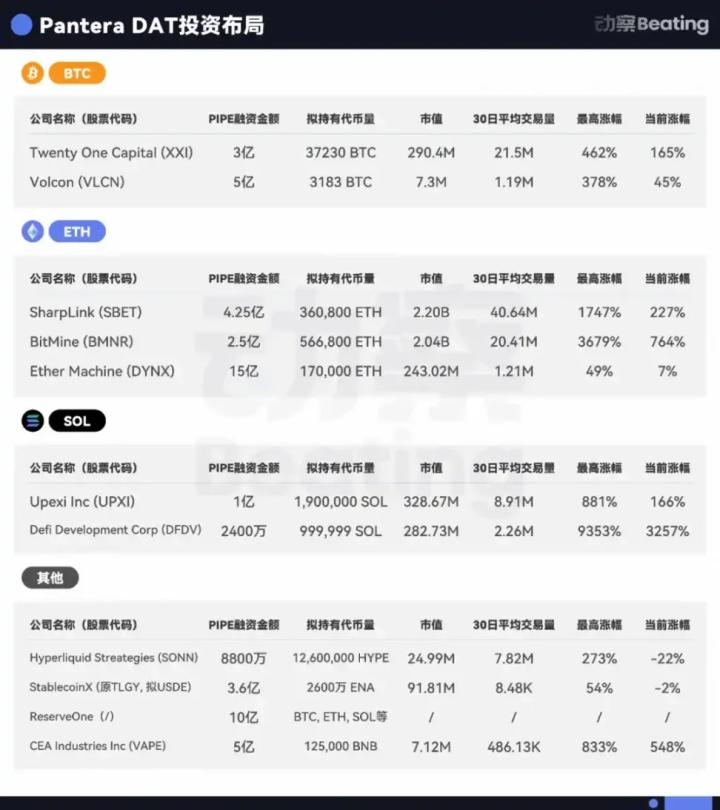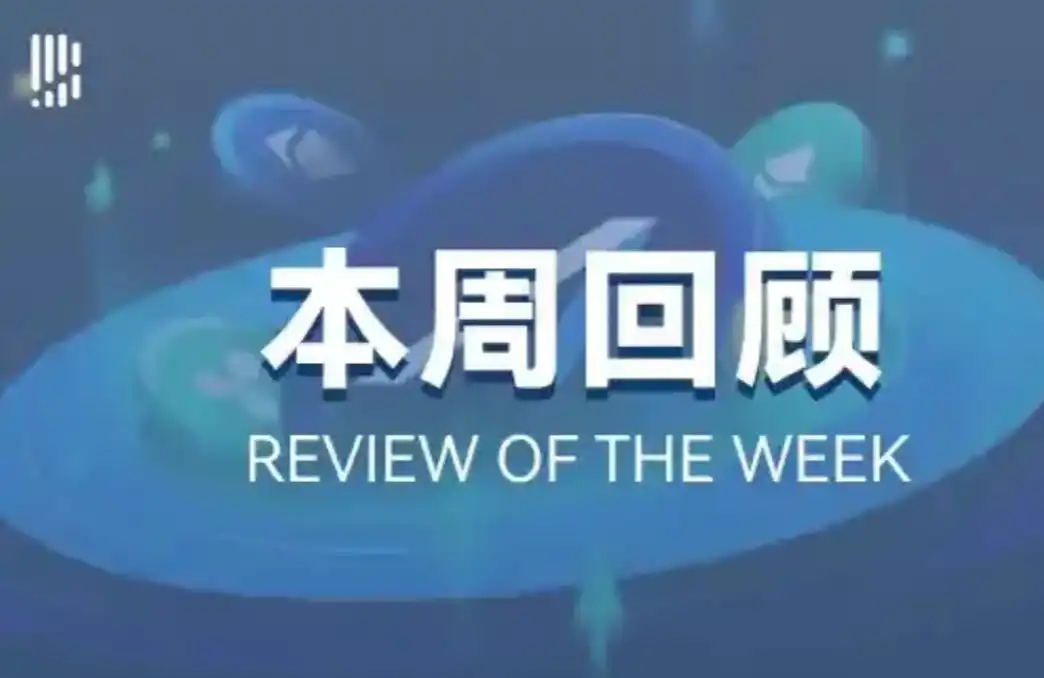Author: Paul Veradittakit, Partner at Pantera Capital; Translated by Jinse Finance
Key Points
Entering its second decade, Ethereum is establishing its position as the foundational layer for stablecoins, DeFi, and tokenized assets.
Digital Asset Treasuries (DAT) are reducing token circulation and driving institutional demand for ETH, thereby creating structural price support.
Regulatory clarity and Ethereum Foundation reforms will make Ethereum the core infrastructure for on-chain capital markets, enabling long-term growth.
Origins of the Ethereum Vision
Before Ethereum, Vitalik Buterin was an early Bitcoin enthusiast who worked at Bitcoin Magazine. There, he noticed the need for script functionality in Bitcoin application development. He embraced this vision, built Ethereum with a universal scripting language, and shared his blueprint for running computation on a decentralized, permissionless network. At the time, this idea was ambitious and sparked some skepticism, as this young person had no experience with large tech companies yet was eager to create something entirely new.
What shifted my and many other early investors' focus was that applications were more inclined to be built on Ethereum rather than Bitcoin and its Layer 2, indicating Ethereum was more suitable for application development. Augur was one of the first killer applications that confirmed this perspective, a decentralized prediction market. Augur demonstrated that Ethereum could build powerful, permissionless applications based on transparency, automation, and financial logic. Ethereum also allowed developers to issue tokens, coordinate governance, and conduct native financing, thereby triggering an ICO boom. At Pantera, we launched one of the first ICO funds and supported early DeFi applications like 0x, always staying at the forefront of Ethereum's development.
Ethereum's Decade
Celebrating its tenth anniversary, Ethereum is enjoying a long-anticipated moment of glory. Launched in 2015, Ethereum pioneered programmable smart contracts and established a developer community that laid the foundation for applications in DeFi, gaming, Non-Fungible Tokens, and more. Over the decade, the ecosystem has continuously innovated, hosting most DeFi protocols and becoming a pillar for stablecoins. Stablecoin infrastructure has significantly matured, with the GENIUS Act providing regulatory clarity, introducing royalties to Ethereum, and boosting its demand. While stablecoins like USDC and USDT exist on multiple chains, Ethereum remains the dominant platform for stablecoin activity, accounting for nearly 50% of global stablecoin market capitalization. Driven by stablecoin adoption and innovative scaling solutions, Ethereum's robust ecosystem continues to drive price increases, with Pantera Capital's strategic investments further amplifying this growth.
Pantera's Ethereum Ecosystem Investments
[Image links omitted]
Over the past decade, Pantera Capital has continuously invested in the Ethereum ecosystem, supporting transformative projects and founders. We are among the few companies that have consistently invested alongside Ethereum's development. Key investments include Circle, which supports USDC. USDC is the leading stablecoin, with a market cap exceeding $60 billion, driving Ethereum's applications in DeFi and payments. The leading Layer 2 solution Arbitrum has captured 100% of Ethereum's incremental transaction growth in 2023, improving transaction processing speed by 40 times and reducing costs by 20 times, completing over 1.89 billion transactions since launch, with cumulative DEX trading volume exceeding $54.5 billion, demonstrating Ethereum's scalability. In recent years, Pantera Capital has become a key participant in capital infrastructure migration, supporting Robinhood's stock token issuance on Arbitrum and becoming the underlying infrastructure for Robinhood Chain. Ondo made significant contributions to the billion-dollar tokenized Treasury market, launching USDY in 2023, highlighting Ethereum's crucial role as core infrastructure connecting real-world assets like US Treasuries with on-chain finance. Morpho significantly enhanced lending experiences on Ethereum, reaching nearly $1 billion in deposits just one year after launch, becoming one of the fastest DeFi protocols to reach this milestone. Pantera participated in the seed round for Bitwise's Ethereum spot ETF, one of the first approved, opening new channels for institutional capital inflow. By 2025, Bitwise manages over $4 billion in assets, leveraging Ethereum's blockchain technology to support DeFi and tokenized asset strategies. Finally, BitMine, in collaboration with companies like Bit Digital, has accumulated over 840,000 ETH in corporate treasuries, demonstrating its commitment to Ethereum's value as a reserve asset.
Institutional Demand, DAT, and Ethereum's Supply Transformation
Ethereum surged 53% in July, but this rise was not driven by hype. It was a structural trend, primarily due to increasing institutional investor allocation to ETFs and Digital Asset Treasuries (DAT), the Ethereum Foundation's turnaround, and recent regulatory clarity.
Institutional investors have shown interest in investing in cryptocurrencies through ETFs and DAT. Just last week, US spot ETH ETFs attracted $1.8 billion in inflows. DATs have also begun significantly accumulating ETH. SharpLink (SBET)'s reserves have increased to 361,000 ETH, and BitMine's Ethereum holdings broke the $2 billion mark in just 16 days. As Tom Lee from BitMine emphasized in a conversation with Pantera's Cosmo Jiang, these fund management companies have inherent advantages: cheap capital, equity premium, staking yield, M&A arbitrage, and operational income, which enable compound growth of ETH value per share with each new issuance. This unique structure continuously compresses Ethereum's free circulation, thereby providing price support beyond simple demand.
[Image and source links omitted]
DATs are no longer a novelty in the crypto native realm but an entry point for institutional investors to engage with cryptocurrencies and Ethereum, allowing them exposure before purchasing spot or conducting on-chain trades. As I mentioned in my previous blog post "Blockchain Listing Wave: Convergence of Public Markets and Digital Assets", these tools concentrate massive buying power, often absorbing ETH quantities exceeding their issuance, thereby intensifying scarcity and triggering broader capital flow to Altcoins.
Regulatory Clarity and Ethereum Foundation's Strategic Shift
Regulatory clarity has also transformed historical headwinds into tailwinds. In July this year, the GENIUS Act granted federally chartered status to regulated payment stablecoins. Stablecoins have quietly become the killer application of cryptocurrencies, with circulation exceeding $250 billion, with Ethereum settling approximately half of global US dollar stablecoin transfers.
Finally, the new leadership and rapid development of the Ethereum Foundation (EF) are helping to drive Ethereum's rapid growth. This transformation includes leadership restructuring, protocol team reorganization, strict financial policies, and an accelerated technical roadmap to address community criticisms of inefficiency, transparency, and competitiveness. By focusing on Layer 2 expansion, blobspace, user experience, and DeFi integration, EF aims to prove Ethereum's dominance in the face of growing institutional adoption (such as Robinhood's stock tokens on Arbitrum) and competition from blockchains like Solana. Despite challenges such as talent retention and managing community expectations, EF's strategic shift will enable Ethereum to leverage on-chain capital market migration, as demonstrated by innovations like Robinhood Chain and Pantera Capital's ecosystem investments.
Final Thoughts
Stablecoins have finally locked onto a reliable track and been reinforced by regulatory clarity from acts like the GENIUS Act, thereby boosting their demand. Digital asset treasuries are the engine driving this demand. They absorb floating funds, drive up prices, and provide institutions with a convenient way to hold cryptocurrencies. In today's market that values structural yields, tokens with deflationary pressure and tied to actual cash flows will become attractive underlying assets for DATs, which will further drive up ETH prices as demand for the Ethereum blockchain surges.
We are at the forefront of a major infrastructure transformation that requires not a magic bullet, but a series of solutions that can address numerous thorny problems. Pantera Capital has always been committed to investing in solutions that can empower the next stage of on-chain capital markets, simplify financial infrastructure, and expand the blockchain innovation horizon. Ethereum is at the center of this transformation, serving as the pillar of stablecoins, the preferred platform for institutions, and a catalyst for the continuous development of the digital asset economy.







